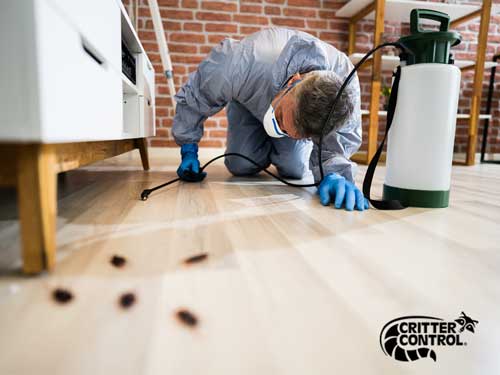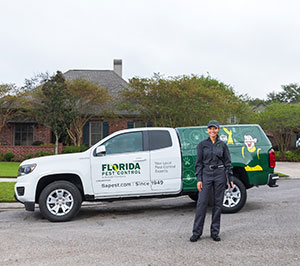Bed Bug Therapy Break Down: Contrasting Chemical Vs. Non-Chemical Solutions
In the realm of parasite control, especially when dealing with the persistent problem of bed pests, the option between chemical and non-chemical therapy solutions can be a crucial one. Both methods provide distinct benefits and drawbacks, influencing aspects such as effectiveness, safety considerations, and overall price. By examining the nuanced information of each method, a more clear understanding of which course to pursue in dealing with a bed insect problem can be attained.
Effectiveness of Chemical Treatments
Chemical treatments for bed bug invasions have been widely identified for their potent and quick efficacy in eliminating these bugs. When considering the effectiveness of chemical treatments, it is essential to recognize that they can offer a comprehensive and fast remedy to a bed pest issue.
Moreover, chemical treatments have the advantage of offering residual effects, meaning that they can remain to get rid of bed pests also after the initial application. This recurring activity is specifically advantageous in combating any kind of possible re-infestations. Furthermore, the quick activity of chemical treatments can bring relief to people facing severe bed insect invasions, allowing them to reclaim control of their space quickly.
Safety And Security Worries With Chemical Solutions
One important aspect that requires mindful factor to consider when utilizing chemical options for bed bug therapy is ensuring the security of passengers and the atmosphere. Direct exposure to certain chemicals made use of in bed bug treatments can lead to respiratory concerns, skin inflammation, or other damaging responses, especially in individuals with pre-existing conditions or level of sensitivities.
Moreover, the environmental influence of chemical options is one more significant consideration. Some pesticides made use of in bed insect therapies might be dangerous to valuable pests, wild animals, and communities if they leach right into the dirt or water systems. It is important to use chemical therapies carefully, following safety standards, and considering less toxic choices to alleviate these dangers and guarantee the effective and safe management of bed insect infestations.
Advantages of Non-Chemical Strategies
Taking into consideration the potential safety problems and environmental impact connected with chemical services for bed pest treatment, discovering non-chemical methods offers an encouraging alternative with numerous distinctive benefits. Non-chemical approaches use a safer alternative for households, particularly those with kids, pet dogs, or individuals sensitive to harsh chemicals. These strategies get rid of the threats of direct exposure to harmful compounds, minimizing the potential for damaging wellness results. In addition, non-chemical treatments are eco friendly, as they do not add to air or water air pollution, making them a sustainable option for bug control.
Additionally, non-chemical remedies can be reliable in targeting bed bugs, consisting of hard-to-reach areas where chemical therapies may not penetrate - A1 exterminators charlotte nc. Methods such as warm treatment, vacuuming, vapor cleaning, and cushion coverings provide thorough elimination without the use of unsafe chemicals.
Limitations of Non-Chemical Treatments

Additionally, non-chemical therapies often require numerous applications to accomplish effective obliteration. This can be lengthy and may not always ensure complete removal of all bed insects and their eggs, specifically in concealed or hard-to-reach areas.
Moreover, the success of non-chemical treatments heavily depends on correct execution and thoroughness, which can be challenging for people without specialist competence. Insufficient application of non-chemical techniques may lead to incomplete removal, resulting in consistent invasions and the demand for added therapies.
As a result, while non-chemical treatments have their advantages, it is necessary to recognize these constraints and consider them when determining the most effective method for managing bed pest problems.
Price Comparison: Chemical Vs. Non-Chemical Options
Offered the restrictions connected with non-chemical treatments, a necessary blog here element to assess in the context of bed bug administration is the expense contrast between chemical and non-chemical alternatives. In contrast, non-chemical therapies like warmth therapy or vapor can be extra costly, with prices varying from $1,000 to $6,000 for an entire home. While the preliminary price of chemical treatments might seem reduced, several treatments might be called for to totally eradicate the problem, possibly increasing the overall price.
Conclusion

Taking into consideration the prospective security issues and environmental effect connected with chemical options for bed pest therapy, checking out non-chemical methods presents a promising choice with a number of distinct benefits.Given the limitations associated with non-chemical treatments, a crucial aspect to examine in the context of bed insect management is the cost comparison in between chemical and non-chemical choices. In comparison, non-chemical treatments like heat therapy or steam can be a lot more costly, with costs varying from $1,000 to $6,000 best termite treatment company for a whole home. While the preliminary price of chemical therapies may seem lower, multiple treatments may be called for to totally eradicate the infestation, possibly enhancing the general cost.In conclusion, when contrasting chemical and non-chemical bed pest treatment options, it is essential to think about performance, safety and security, benefits, constraints, and expense.